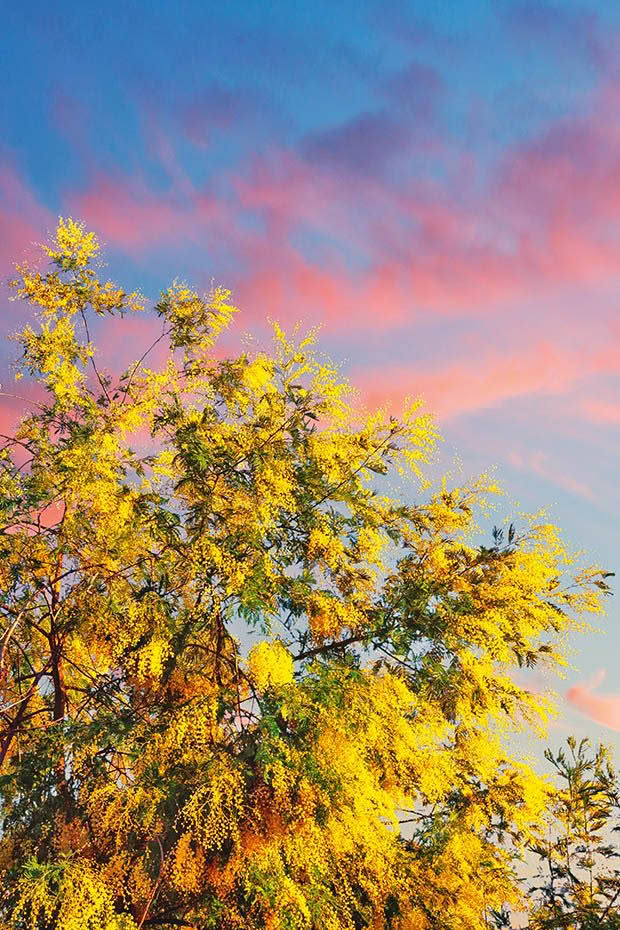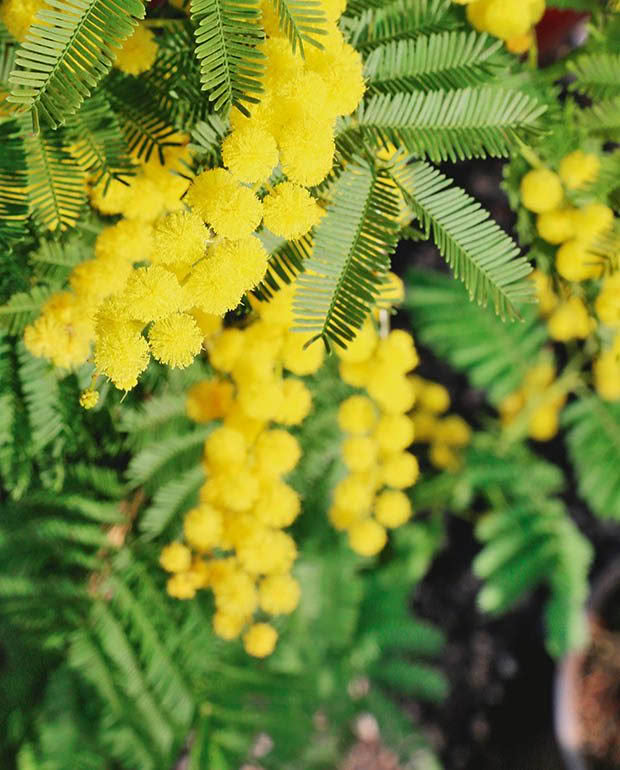The best firewood trees, according to a forester

Eric’s favourite firewood tree (that suits his block) is silver wattle (Acacia dealbata). It grows fast, and produces pollen-rich flowers.
Eric Cairns has dedicated his life to growing trees. Here’s his advice for block owners who want to produce a good firewood supply.
Words: Nadene Hall
Eric Cairns’ block looks like a forest. It’s covered mostly in specialty timber trees, which means he also gets a range of beautiful firewood thanks to thinning and windfall branches.
“I read all the coppicing articles and planted scores of different timber species 20-25 years ago, so am now well qualified to give advice.”
The best firewood species for any block, anywhere in NZ, depends on five factors
• the size of your block;
• your ability to safely harvest;
• your time frame;
• your local climate;
• your soil type/s.
Depending on your block’s size, you don’t need to plant trees specially for firewood.
Instead, if you plant the right trees, they’ll work for you as they grow, providing shelter, shade, habitat, and beauty, and can be pruned, coppiced or felled for firewood.
ERIC’S ADVICE: HOW TO FIND THE RIGHT FIREWOOD FOR YOUR BLOCK
The key attributes of any trees you grow are to plant ones that:
• suit your regional climate;
• are hardy and moderately wind-firm;
• grow fast;
• produce at least a medium density timber (not too soft, not too hard);
• don’t grow too large if not harvested as quickly as you intend;
• split easily;
• burn cleanly.
Eric says if he were starting from nothing and wanted good firewood, he’d pick the trees that best suit the unique conditions on his Upper Hutt block.
“We have some winter frosts, north-facing slopes, 1500mm annual rainfall, heavy clay soils, and it’s subject to rare easterly turbulence but no salt burn.”

ERIC’S FAVOURITE FIREWOOD (FOR HIS BLOCK)
The best firewood tree on Eric’s block is Acacia dealbata (silver wattle, pictured top left).
“It grows much faster than its cousin Acacia melanoxylon, has similar density, attractive flowers in spring, and the birds don’t spread the seed. It doesn’t coppice but readily regenerates from its own seed.
“You could plant it at 2-4m (apart) as single species and then thin out to allow the better ones to grow fatter. It tolerates cool, wet conditions but absolutely thrives in hot, dry conditions too.”
The bonus for the man who loves specialty timber?
“It has very attractive timber (used to make furniture), should you have enough large trees for milling (15-20 years).”
THE 1 TREE YOU SHOULD NEVER PLANT
They already cover 1.5+ million hectares of NZ, so Eric is adamant: don’t plant pine (Pinus radiata) when there are far better options in terms of heat production and management.
“It’s not that flash as firewood (best used as kindling only), quickly gets out of hand, and in a small woodlot, it’s a liability as a saw log unless you mill it yourself.”
Even some trees that produce good timber are on Eric’s ‘no plant’ list due to his climate and soil conditions:
• European chestnut (too prone to root rot);
• Robinia pseudoacacia, elm (serious suckering problems, weed potential);
• sycamore, cherry (seed far too freely);
• ash, alders (prone to pūririi moth damage which limits growth);
• exotic ‘bird food’ berry species such as holly, Darwin’s barberry, cotoneaster, elaeagnus, hawthorn (too weedy).

WHAT IS THE BEST FIREWOOD?
The answer to this question is subjective. Some people believe the best option is to plant lots of trees for other reasons (fruit, shelter, shade). In time – often within a few years – the prunings will produce all the firewood you need.
Others believe it’s a particular type of tree – often in NZ, it’s an Acacia or Eucalyptus variety. Then there are people who’ll tell you never to plant Eucalyptus.
What firewood aficionados do agree on is that blue gum (Eucalyptus saligna), seasoned for at least several years, burns long and hot.
However, it needs particular growing conditions and doesn’t suit many parts of NZ. It’s also a hard, twisting wood, so cutting it for firewood is tricky. Once down, it needs to be split quickly – within a week or so – and it’s best done using a power log splitter. You also need somewhere to store it for several years while it dries.
Love this story? Subscribe now!
 This article first appeared in NZ Lifestyle Block Magazine.
This article first appeared in NZ Lifestyle Block Magazine.
